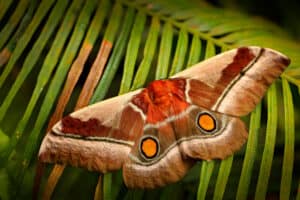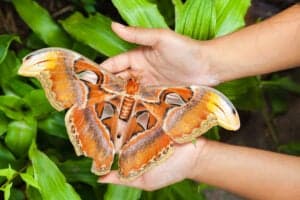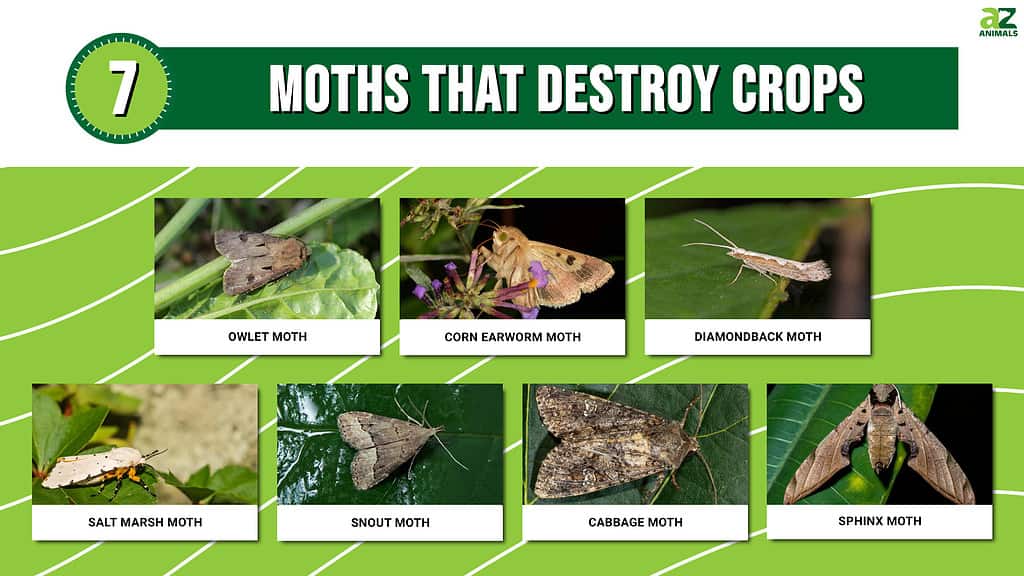
The vast majority of moths feed on a host plant while they are still caterpillars, just like butterflies do. Some moths, unlike most butterflies, don’t just eat leaves; they can consume seeds, roots, or plants from the inside by burrowing into stems of wood or limbs.
Below you’ll find the most destructive moths that could damage your crops at any moment. Read on to learn what fruits and vegetables are at risk of these pesky creatures!
Owlet Moth
More than a quarter of all butterflies and moths are owlet moths. There is a lot of variability among this bunch, as one might anticipate in a family this size. Typically, mature owlet moths eat nectar or honeydew.
Some have a strong, keen proboscis that allows them to pierce fruit. The noctuids comprise well over 35,000 species worldwide, having the kind of widespread distribution you’d anticipate from such a sizable phylum. There are almost 3,000 different owlet moth species just in North America.
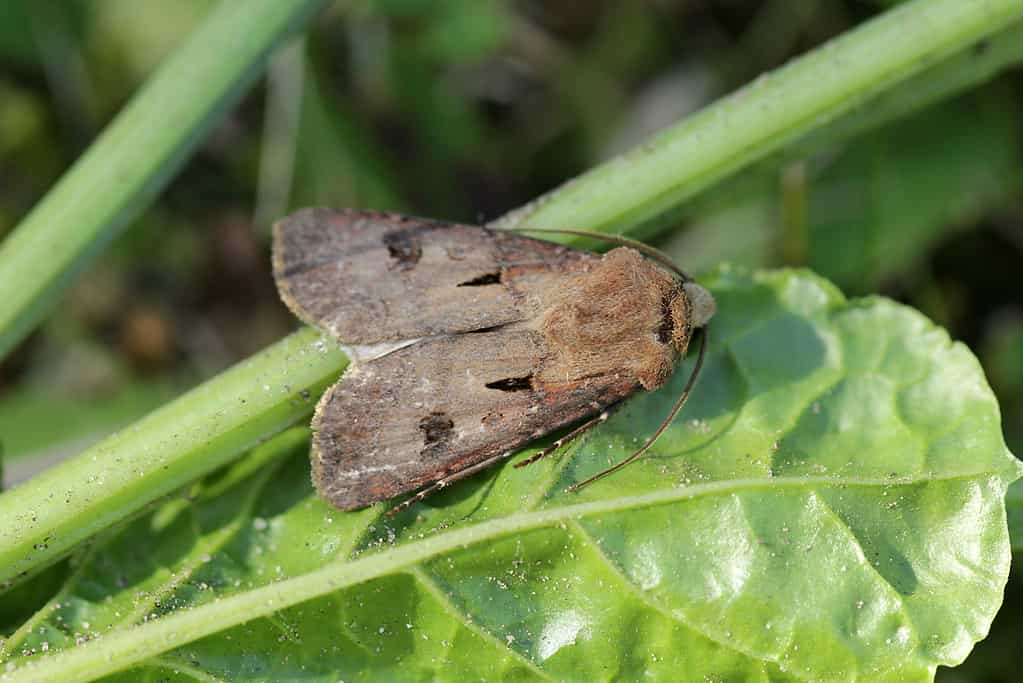
More than a quarter of all butterflies and moths are owlet moths.
©iStock.com/Tomasz Klejdysz
Corn Earworm Moth
The corn earworm, also called cotton bollworm and tomato fruitworm, feasts on a variety of crops. Corn, tomato plants, cotton, green beans, vetch, clovers, and lettuce are some of the corn earworm moths’ favorite crops.
They also enjoy peppers, soybeans, and sorghum. The southern United States typically experiences the worst corn earworm outbreaks. The corn earworm is thought to cause losses of 2.5% every year in field corn, with damages in the southern United States fluctuating between 1.5 to 16.7%. In the case of sweet corn, losses could reach 50%!

The corn earworm is thought to cause losses of 2.5% every year in field corn.
©Davide Bonora/Shutterstock.com
Diamondback Moth
Long regarded as a minor pest, the diamondback moth is still important to be aware of. Larval feeding damages plant life. Even though the larvae are tiny, they can be extremely abundant, which causes all foliar tissue to be removed save for the leaf veins.
This is especially detrimental to seedlings and may prevent broccoli, cabbage, and cauliflower from developing heads. Even if just a tiny amount of plant tissue is removed, the existence of larvae in florets might cause total rejection of the crop.
Just plants in the family, Cruciferae are targeted by diamondback moth infestations. All varieties of cruciferous vegetables, including broccoli, Brussels sprouts, cabbage, cauliflower, collard greens, kale, mustard, radish, turnips, and watercress, are largely consumed.
However, not all are comparably favored, and developing moths typically favor collard over cabbage. When crops that are grown are not yet accessible during the early part of the season, a number of cruciferous weeds play a vital role as hosts.
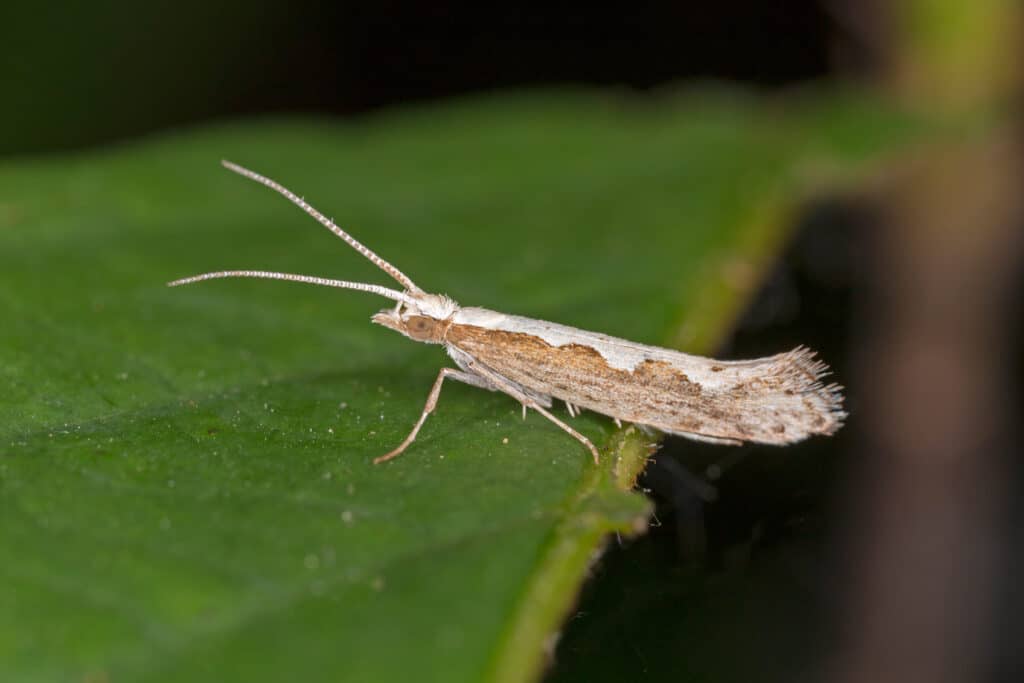
Even though the larvae of the diamondback moth are tiny, due to their large numbers they can cause considerable damage to crops.
©Ihor Hvozdetskyi/Shutterstock.com
Salt Marsh Moth
The salt marsh moth was given its name after being observed munching upon hay meadows in salt marshes close to Boston, however it is not a large grass feeder. Herbaceous, woody, wild, and commercial crops are preferred by this moth.
It eats a variety of broad-leaved agricultural plants, including pigweed, ground cherry, mallow, and clovers. Crops including corn, cauliflower, and peas are favorites of the salt marsh moth. Be ready for the salt marsh moth to eat your planted carrots, onions, tomatoes, beetroot, or beans as free-range. They occasionally feed on the foliage of elderberry, apple, walnut, and cherry trees.

The salt marsh moth enjoys crops such as corn, cauliflower, and peas.
©Jay Ondreicka/Shutterstock.com
Snout Moth
The mouthparts (palpi) on snout moths extend forward like a snout, hence the name. This common species of crambid larvae consume crops such as grass, celery, clover, alfalfa, and smartweed. Scale feeding is a term used to describe some of these moths.
As their name implies, scale-feeding snout moth larvae mostly consume the eggs and juveniles of bugs known as scale insects because of their scaly external appearance. Additionally, these moths will consume vegetation like cactus blossoms.

Snout moths are known to damage crops such as grass, celery, clover, alfalfa, and smartweed.
©DJTaylor/Shutterstock.com
Cabbage Moth
The cabbage moth is one of many mothy crop pests that can be encountered throughout the British Isles and other parts of the world. They cause significant crop damage, especially to plants in the cabbage family.
There is white, frequently somewhat broken highlighting surrounding the kidney mark, especially on the outside edge, which is the only really noticeable identifying trait at first glance.
Since the species lives on numerous fruits, vegetables, and plants in the genus Brassica, the common name “cabbage moth” is misleading. Their diet includes cabbage, broccoli, and Brussels sprouts. Tobacco, sunflower, and tomato are important host plants as well, rendering this pest species very economically destructive.
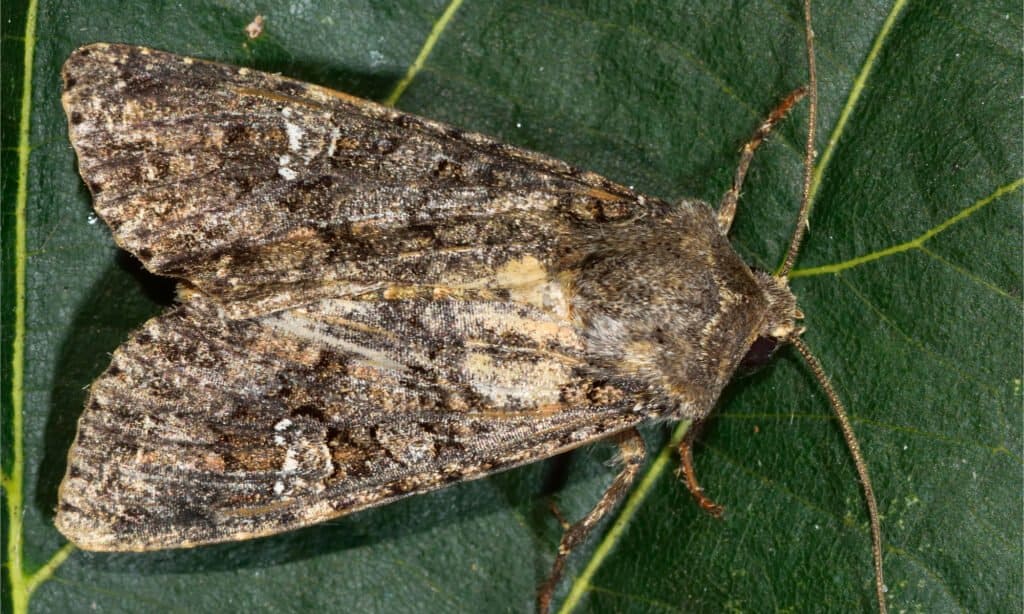
Cabbage moths cause significant crop damage, especially to plants in the cabbage family.
©IanRedding/Shutterstock.com
Sphinx Moth
Sphinx moths often have a long, arched abdomen and a huge, heavy body. They frequently hover close to blooms while consuming nectar with their lengthy proboscis. There are a variety of potential host plants for each species of moth.
For instance, some species only consume foods from the tomato, potato, and tobacco families. Others must consume the leaves of trees in the rose family, including plums, cherries, and apples.
With their lengthy tongues, mature sphinx moths are excellent at slurping nectar from long-throated blooms like trumpet vine and jimsonweed. They float in the breeze like hummingbirds while eating. Some play a vital role in pollination. Different species consume nectar at various times of the day or night, with many doing so at dawn or dusk.
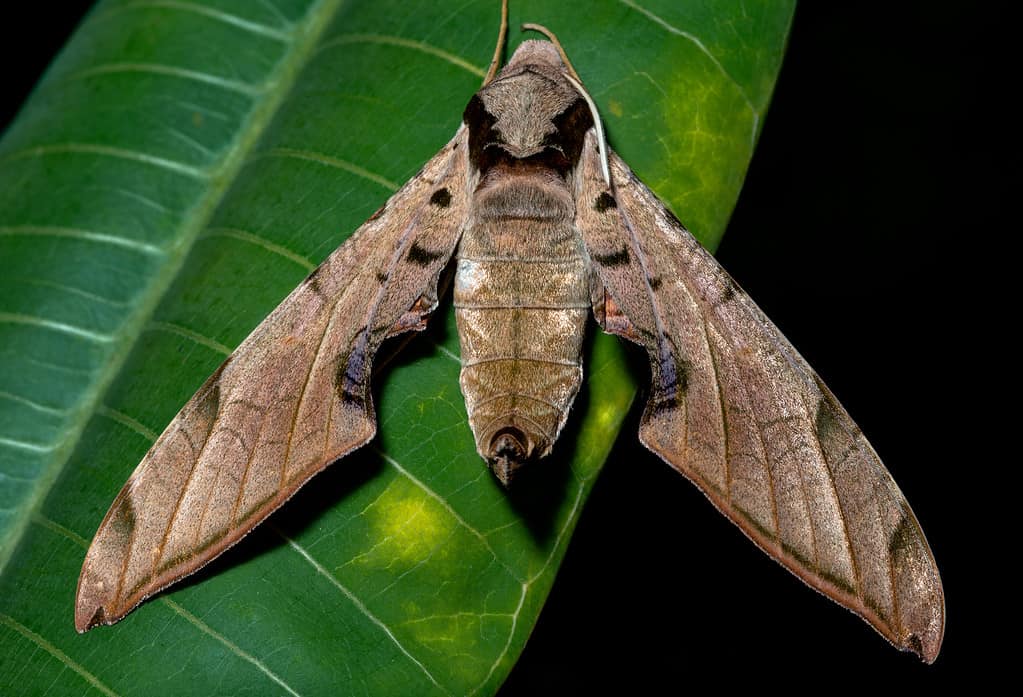
The sphinx moth typically has a long, arched abdomen and a large, heavy body.
©iStock.com/Daynjer-In-Focus
Summary of the 7 Moths That Destroy Crops
Here are the 7 Moths That Destroy Crops:
| Rank | Moth Species |
|---|---|
| 1 | Owlet Moth |
| 2 | Corn Earworm Moth |
| 3 | Diamondback Moth |
| 4 | Salt Marsh Moth |
| 5 | Snout Moth |
| 6 | Cabbage Moth |
| 7 | Sphinx Moth |
The photo featured at the top of this post is © samray/Shutterstock.com
Thank you for reading! Have some feedback for us? Contact the AZ Animals editorial team.




